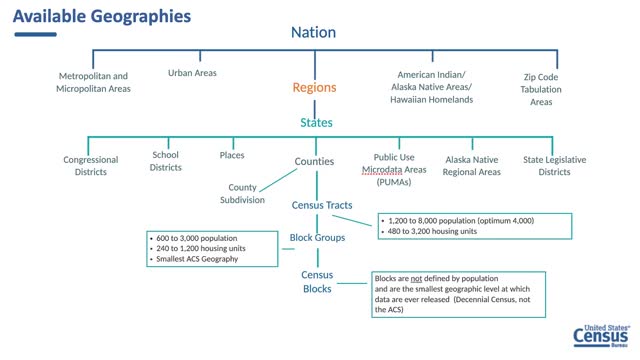Data Dive Reveals Hidden Insights on Community Trends
November 07, 2024 | Kings County - Brooklyn Borough, New York
This article was created by AI summarizing key points discussed. AI makes mistakes, so for full details and context, please refer to the video of the full meeting. Please report any errors so we can fix them. Report an error »

During a recent community board meeting, officials highlighted the importance of utilizing census data to better understand local demographics and needs. The discussion centered on the American Community Survey (ACS) and the decennial census, emphasizing the accessibility of data available through Census.gov.
Participants were encouraged to explore various topics, including educational enrollment, health insurance, and disability statistics. The speaker noted that while the ACS provides estimates over five years, the decennial census offers a precise headcount without a margin of error, making it a valuable resource for community planning.
A QR code was shared, allowing attendees to quickly access census data on their mobile devices. The speaker demonstrated how to look up information by entering specific addresses, highlighting the ease of accessing data in both tabular and graphical formats. This functionality is particularly useful for visualizing trends such as poverty levels and housing costs.
The meeting also addressed population estimates, revealing that all boroughs in New York City have experienced population declines since the 2020 census. This data is crucial for equitable funding distribution, amounting to over $2.8 trillion annually.
Additionally, detailed analyses of race and ethnicity data were discussed, showcasing the diversity within Kings County. The speaker provided insights into public school enrollment statistics and the prevalence of ambulatory disabilities, illustrating the potential for data-driven decision-making in local governance.
Overall, the meeting underscored the significance of census data as a tool for community engagement and informed policy-making, encouraging residents to leverage these resources for better understanding and addressing local issues.
Participants were encouraged to explore various topics, including educational enrollment, health insurance, and disability statistics. The speaker noted that while the ACS provides estimates over five years, the decennial census offers a precise headcount without a margin of error, making it a valuable resource for community planning.
A QR code was shared, allowing attendees to quickly access census data on their mobile devices. The speaker demonstrated how to look up information by entering specific addresses, highlighting the ease of accessing data in both tabular and graphical formats. This functionality is particularly useful for visualizing trends such as poverty levels and housing costs.
The meeting also addressed population estimates, revealing that all boroughs in New York City have experienced population declines since the 2020 census. This data is crucial for equitable funding distribution, amounting to over $2.8 trillion annually.
Additionally, detailed analyses of race and ethnicity data were discussed, showcasing the diversity within Kings County. The speaker provided insights into public school enrollment statistics and the prevalence of ambulatory disabilities, illustrating the potential for data-driven decision-making in local governance.
Overall, the meeting underscored the significance of census data as a tool for community engagement and informed policy-making, encouraging residents to leverage these resources for better understanding and addressing local issues.
View full meeting
This article is based on a recent meeting—watch the full video and explore the complete transcript for deeper insights into the discussion.
View full meeting
